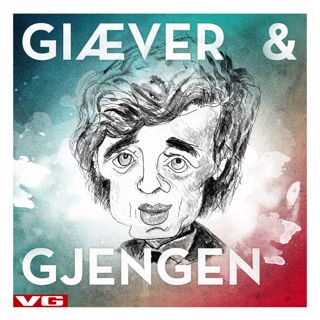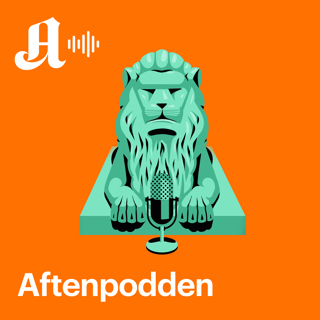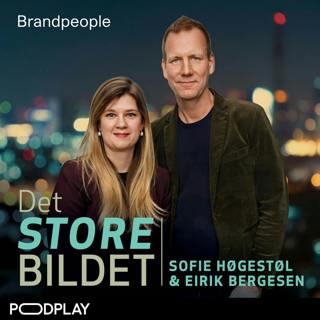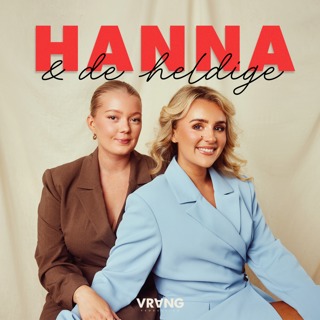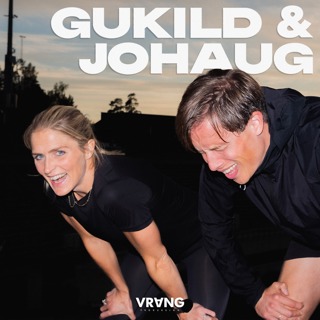
Fashion Resilience in a K-Shaped Economy: Navigating Luxury Gains, Mid-Market Struggles, and Holiday Spending Shifts
In the past 48 hours leading into December 26, 2025, the fashion industry shows resilience amid a K-shaped economy, with luxury thriving, mid-market struggling, and holiday spending up overall. US holiday retail spending rose 4.2 percent year-over-year across payment types, driven by a 5.3 percent surge in clothing and accessories, per Visa data from the past week[14]. Yet Super Saturday on December 20 saw softer traffic at department stores and traditional apparel retailers, down double-digits from 2024, as shoppers opt for fewer items or value alternatives[9].Market movements reflect polarization: top apparel stocks like Nike, Lululemon, and TJX saw high trading volume on December 25, signaling investor interest despite China weakness and tariff risks[7]. Luxury deals dominate, including Kering's Boucheron expansion via UAE joint venture with Al Tayer Insignia on December 24[2], Burberry's decade-long eyewear renewal with EssilorLuxottica[4], and Smythson acquisition by Oakley Capital[6]. Torrid announced nearly 200 store closures, shifting to e-commerce amid plus-size market growth projected at 6.5 percent CAGR to 37.4 billion by 2033, with online now over 60 percent of sales[1].Consumer behavior shifts toward selectivity: value and high-end retailers captured Black Friday traffic, hollowing the middle, while footwear under 250 dollars holds 42 percent share versus declining luxury tiers[3]. Supply chain pressures from 2025 tariffs linger, forcing price hikes at Shein and Temu[5]. Leaders respond boldly: Kering pursues regional partnerships, OVS reports 9 percent Q3 revenue growth[2], and innovators like Spinnova advance eco-fibers[2].Compared to early 2025's tariff shocks and creative resets, current conditions stabilize with deal-making up and holiday gains, though mid-tier woes persist versus last year's stronger gifting[9][5]. The industry pivots to e-commerce, inclusivity, and strategic alliances for 2026 resilience. (298 words)For great deals today, check out https://amzn.to/44ci4hQThis content was created in partnership and with the help of Artificial Intelligence AI
26 Des 2min

Navigating the Fashion Industry's Shifting Landscape in 2025: Consolidation, Consumer Trends, and Digital Transformation
FASHION INDUSTRY STATE ANALYSIS: DECEMBER 2025The fashion industry is navigating a complex landscape marked by cautious consumer spending, strategic consolidation, and accelerating digital transformation. Recent developments over the past week reveal critical shifts in market dynamics.MARKET CONSOLIDATION AND MAJOR DEALSThe luxury sector experienced significant consolidation activity. On December 19, HSG and Temasek announced plans to acquire stakes in Golden Goose, signaling strong investor interest in heritage brands. More notably, on December 17, the newly formed luxury group Hulcan acquired iconic fashion retailer MATCHES and its in-house label RAEY, planning a comprehensive relaunch in 2026 under an omnichannel model. These moves reflect a broader trend of consolidation as established players seek competitive advantages through strategic partnerships.CONSUMER SPENDING PATTERNS AND ECONOMIC PRESSUREConsumer behavior continues to shift significantly. According to McKinsey's State of Beauty 2025 report, 54 percent of executives identify restricted consumer spending as the greatest risk to industry growth. This reflects broader economic pressures from tariffs, inflation, and job insecurity. Despite challenges, prestige market sales increased 4 percent to 24.1 billion dollars from January through September 2025, with fragrance showing particular resilience at 6 percent growth.RETAIL SECTOR CHALLENGESFootwear retailers face mounting pressures from intensifying competition, particularly from Asian online platforms. Germany's footwear sector is sharply underperforming the broader retail market, though online retail expanded 12.9 percent compared to the same period in 2024. This disparity highlights the accelerating shift toward digital channels at the expense of traditional physical retail.COLLABORATIVE MOMENTUM AND INNOVATIONFashion houses continue pursuing strategic collaborations to drive consumer interest. Recent partnerships span from luxury to mass market, including designer tie-ups and celebrity collaborations. These initiatives aim to capture consumer excitement while democratizing high fashion across price points.OUTLOOKThe fashion industry enters year-end trading with cautious optimism. Retailers are emphasizing inventory discipline and promotional strategies to offset persistent margin pressure. Digital channels continue gaining share, with online momentum providing growth opportunities despite overall spending constraints. Success will depend on brands' ability to deliver value while maintaining pricing integrity and responding to evolving consumer preferences for personalization and sustainability.For great deals today, check out https://amzn.to/44ci4hQThis content was created in partnership and with the help of Artificial Intelligence AI
23 Des 2min

Fashion's Shifting Landscape: Luxury Consolidation, Resale Surge, and Circular Materials Momentum
Global fashion is ending the week in a mixed but active state, defined by consolidation at the top, rapid growth in resale, and accelerating moves toward circular materials.On the deal front, luxury continues to reshape. Prada Group has just completed its €1.25 billion acquisition of Versace from Capri Holdings, cementing a larger multi‑brand platform and confirming the ongoing consolidation trend in high‑end fashion compared with earlier years of slower M&A activity.[6] A new luxury group, Hulcan, has acquired MATCHES and its in‑house label RAEY and plans a 2026 relaunch under an omnichannel model, signaling that distressed digital retailers are being repositioned rather than written off.[6] Asset investor Gordon Brothers has taken a majority stake in the Rachel Zoe brand to grow licensing and distribution, while Republic Brands Group has bought Joie, Equipment, and Current/Elliott for 36 million dollars and will pivot them toward direct‑to‑consumer and wholesale, away from heavy brick‑and‑mortar dependence.[6]At the mass and value end, fast fashion remains structurally strong. A new market analysis values the global fast fashion market at about 114.71 billion dollars in 2024 and projects a 7.59 percent compound annual growth rate through 2032, driven by demand for trendy, affordable apparel and social‑media‑led cycles.[1] In parallel, the apparel resale market is expanding even faster, from 181.4 billion dollars in 2024 to an estimated 202.39 billion in 2025, an 11.6 percent growth rate, with forecasts of 311.8 billion by 2029.[3] Compared with earlier resale estimates, this confirms a clear shift in consumer behavior toward affordable luxury, sustainability, and digital resale platforms.[3]Sustainability news in the last 48 hours centers on circular materials. Recycled‑textile maker Circulose, which went through bankruptcy and restructuring in 2024, has announced new partnerships with Bestseller, John Lewis, C and A, Filippa K, Reformation, Faherty, Bobo Choses, and Zero.[2][4] These deals follow earlier agreements with H and M, Mango, and Marks and Spencer and are expected to help restart production and move recycled cellulose fibers from pilots into mainstream collections.[2][4] Industry analysts view this as renewed confidence in circular solutions amid regulatory and consumer pressure on fashion’s environmental impact.[2]Licensing and product launches are targeting sports and lifestyle trends. WHP Global has just signed a licensing deal with Pure Cotton Global Group to relaunch the historic Italian brand Lotto as a lifestyle apparel line in the United States and Canada, explicitly aiming to ride soccer‑inspired fashion ahead of the 2026 World Cup.[10] This reflects a pricing and product strategy built around athletic‑casual demand rather than pure performance gear.Across the sector, brands are reacting to cautious but not collapsed demand. Recent retail commentary notes that tariffs and cost pressures are squeezing margins, pushing labels to differentiate through experiences and collaborations rather than simple price cuts.[7] Luxury groups are doubling down on omnichannel experiences and experiential retail, while mid‑market and heritage brands are leaning on licensing, data‑driven assortments, and leaner supply chains. Compared with earlier in the year, the current picture is one of consolidation, selective expansion, and pragmatic sustainability rather than aggressive volume growth at any cost.For great deals today, check out https://amzn.to/44ci4hQThis content was created in partnership and with the help of Artificial Intelligence AI
18 Des 3min

Sustainability Soars, Sportswear Surges, and Supply Chains Shift: Fashion's Latest Moves
Global fashion is ending the week in a mixed but cautiously optimistic state, shaped by sustainability deals, geopolitical disruption, and price‑sensitive consumers.On the deal front, one of the clearest signals is the renewed push into next‑generation materials. Swedish recycler Circulose has just expanded partnerships with major brands including Bestseller, John Lewis, C and A, Filippa K, Reformation, Faherty, Bobo Choses, and Zero, adding to earlier collaborations with H and M, Mango, and Marks and Spencer.[2][4] These long term commitments are designed to scale Circulose’s regenerated cellulose pulp as a substitute for viscose and lyocell, showing that large retailers are moving from pilot projects to volume contracts on circular materials.[2][4] Compared with reporting from 2024, when such materials were mostly in test capsules, this marks a shift toward making low impact fibers part of core assortments.[4]Market movements also reflect renewed interest in sports and streetwear. WHP Global has signed a new licensing partnership with Pure Cotton Global Group to relaunch Lotto’s lifestyle apparel line in the United States and Canada.[6][10] The first collection, now available online, leans into soccer inspired fashion at a time when football culture is shaping youth style ahead of the 2026 World Cup.[6] This underlines an ongoing consumer tilt toward casual performance pieces at mid market prices, even as luxury growth concentrates in the top income tiers.[9]Supply chains remain fragile. Recent analysis of the 2025 Asian Spring protests in South and Southeast Asia estimates about 10 billion dollars in losses in Bangladesh alone, with at least 183 garment factories forced to close and global fashion retailers facing shipping delays and temporary production relocations.[3] While the most acute unrest has subsided, brands are still diversifying sourcing away from single country dependence, which may add modest cost pressure but improves resilience compared with earlier, more concentrated sourcing patterns.[3]Policy and regulation continue to push circularity. The Global Fashion Agenda has announced the Circular Fashion Partnership program in Türkiye, launching in early 2026 to implement factory level textile waste systems and boost recycling.[8] This builds on earlier pilots in Bangladesh and signals that producers in key sourcing hubs are preparing for stricter waste and eco design rules in Europe, influencing how upcoming collections are designed and priced.[8]Taken together, the past 48 hours confirm three trends: sustainability partnerships are moving to scale, sports led casual wear is capturing demand ahead of major events, and supply chains are being rewired in response to both political risk and emerging circularity regulation.For great deals today, check out https://amzn.to/44ci4hQThis content was created in partnership and with the help of Artificial Intelligence AI
17 Des 3min

Resilient Fashion: Luxury, Vintage and Tech Thrive Amid Softer Demand and Discounting
Global fashion is ending the year in a mixed but surprisingly resilient position, with growth pockets in luxury, vintage and fashion tech offsetting weaker export demand and heavy discounting in mass retail.[1][4][9]In trade, US textile and apparel exports from January through September 2025 fell 3.6 percent year over year to 16.73 billion dollars, as brands face softer global demand and tougher price competition, especially from Asia.[9] This confirms a continuation of 2024’s slowdown in volume, but with steeper discounting now visible in holiday promotions such as US mall chains offering 25 to 50 percent off seasonal collections to clear inventory.[6]Consumer behavior is shifting toward value, sustainability and resale. A new forecast on the vintage fashion market released this week projects “unprecedented growth” from 2025 to 2032, driven by digital resale platforms like ThredUp, Depop, Poshmark, The RealReal and Vestiaire Collective, as younger shoppers trade fast fashion for pre owned pieces and price conscious experimentation.[1] This accelerates trends already visible last year but now backed by larger investment and clearer regulation around online marketplaces.[1]Investment is increasingly targeting fashion technology and direct to consumer brands. In 2025, Los Angeles alone has seen about 1.2 billion dollars in fashion and retail tech deals, with money flowing into resale platforms, wholesale marketplaces and supply chain technology for brands like Reformation, Good American and SKIMS.[4] Average seed rounds around 3.5 million dollars are higher than several competing US hubs, underscoring investor belief that data driven merchandising and supply chain visibility are key to navigating current volatility.[4]Industry leaders are adapting with financial discipline and diversified categories. H and M has just reported ongoing share buybacks under a 1 billion Swedish krona program running through late January 2026, signaling confidence in its long term strategy despite margin pressure.[10] At the brand level, Kendra Scott reports about 30 percent sales growth in 2024 and nineteen consecutive quarters of revenue gains; for 2025, growth remains positive though slower, supported by expansion into eyewear and cowboy boots and by partnerships like its recent holiday activation with beauty brand Jones Road, which helped drive a 95 percent ecommerce sell through on featured products.[2]Compared with late 2024, today’s fashion landscape shows more cautious consumers, softer exports and heavier promotions, but also a faster build out of resale, vintage and fashion tech as brands race to protect margins, manage inventory and meet more climate and value conscious shoppers.[1][4][9][11]For great deals today, check out https://amzn.to/44ci4hQThis content was created in partnership and with the help of Artificial Intelligence AI
15 Des 3min

Navigating the Resilient Landscape of Global Fashion: Luxury, Digital Commerce, and Emerging Markets
Global fashion is ending the year in a mixed but resilient position, with growth led by luxury, digital commerce, and emerging markets, alongside pressure from costs and changing consumer behavior.New market data this week suggests that the global luxury fashion market, valued at about 258 billion dollars in 2024, is projected to reach roughly 266 billion in 2025 and 312 billion by 2030, a steady annual growth of just over 3 percent. This continues the post pandemic rebound but at a slower, more disciplined pace, with brands leaning on higher prices, exclusivity, and greater productivity rather than pure volume growth. Consumers with higher incomes are still spending, but are trading up selectively, prioritizing quality, brand heritage, and sustainable materials.Across apparel more broadly, women’s wear remains a core growth engine, with the global women’s apparel market recently estimated at just over one trillion dollars in 2024 and on track to expand significantly by 2030. This reflects a continuing shift toward versatile, comfort driven clothing suitable for hybrid work and social lives, and supports investment in inclusive sizing and technical fabrics.Digitally, major brand owners are racing to consolidate marketplace operations and capture social commerce demand. In the past 48 hours, Authentic Brands Group, which owns labels such as Reebok, Champion, and Forever 21, named Pattern Group as its global ecommerce marketplace accelerator and premier TikTok Shop partner. Pattern will centralize inventory planning, forecasting, fulfillment, and brand protection across platforms such as TikTok Shop, Amazon, Walmart, and Zalando, using AI tools to fight unauthorized sellers and tailor content by marketplace. This underscores how much fashion purchasing has shifted to platforms where entertainment, discovery, and checkout now blend seamlessly.Regionally, Europe remains a powerhouse: its textile and fashion sector generated more than 200 billion euros in turnover in 2023 and employs over 1.7 million people, and 2025 projections for the United Kingdom alone point to almost 89 billion dollars in apparel revenue, with fashion accounting for close to one third of all ecommerce. At the same time, brands are looking to faster growing markets such as India, where new partnerships are expanding premium and kidswear offerings.Consumer sentiment remains cautious in the mass and mid market, pushing retailers toward sharper promotions, holiday storytelling that leans into nostalgia and emotional reassurance, and tighter inventory management to avoid markdown driven margin erosion. Industry leaders are responding by doubling down on sustainability claims, capsule collections, AI supported personalization, and closer control of global distribution, aiming to protect brand equity while navigating slower, but still positive, growth.For great deals today, check out https://amzn.to/44ci4hQThis content was created in partnership and with the help of Artificial Intelligence AI
11 Des 3min

Fashion's Adaptive State: Slower Growth, Beauty Pivot, and Inclusive Curation
Global fashion is ending the year in a mixed but adaptive state, with the last 48 hours underscoring three big themes: slower core fashion growth, a pivot to beauty and lifestyle, and a sharper focus on value, curation, and inclusivity.Recent data from 2025 shows fashion and leather goods launched fewer store openings, pop ups, and other retail activations this year, down about 9 percent versus the first half of 2024, while beauty grew these initiatives by roughly 13 percent, led by Asia Pacific and the Middle East and North Africa regions.[3] China still accounts for about one third of global fashion related activations, ahead of Europe and North America, confirming its role as the key physical retail engine.[3]Against this slowdown, brands are leaning into collaborations, luxury curation, and direct client relationships. Gap just announced a 20 piece Gap and Summer Fridays holiday capsule, blending cozy loungewear with a beauty led aesthetic, priced from 28 to 98 dollars and rolling out across North America and select international markets.[2][6] Pacsun and the Metropolitan Museum of Art launched a new Cloisters Holiday Collection, with apparel and accessories from 35 to 150 dollars, explicitly framed as a response to rising demand for elevated but accessible fashion among young consumers.[4]At the luxury end, online retailer FWRD, part of Revolve, reported a 37 percent year over year increase in gross profit in the third quarter of 2025 and more than 100 percent growth in its personal shopping program sales over the first nine months of the year, evidence that high spending clients are paying for curation and service even in a volatile market.[5] FWRD’s appointment of Rosie Huntington Whiteley as Fashion Director signals how celebrity led storytelling is being used to defend pricing power and market share.[5]Consumer behavior is shifting toward comfort, resale, and inclusivity, but not always sustainably. A new Yale study finds frequent secondhand shoppers often buy more new clothing overall, expanding rather than shrinking fashion’s carbon footprint.[9] At the same time, research from the University of Nevada shows that inclusive sizing increases brand trust and purchase intent across all shoppers, reinforcing why size expansion is becoming a commercial, not just ethical, imperative.[13]Compared with earlier 2025 reporting that highlighted simple post pandemic recovery, the current picture is more complex: core fashion retail is cooling, beauty and lifestyle adjacencies are powering growth, and leading players are responding with tighter assortments, experience driven retail, and partnerships that stretch beyond traditional fashion boundaries.For great deals today, check out https://amzn.to/44ci4hQThis content was created in partnership and with the help of Artificial Intelligence AI
9 Des 2min

Fashion Industry Cautiously Optimistic: Tech, Sustainability, and Selective Spending
The global fashion industry is closing the week with cautious optimism, shaped by technology investments, sustainability rules, and selective consumer spending.Over the past 48 hours, the biggest strategic moves have come from beauty and apparel leaders tightening their focus and balance sheets. LOréal is doubling its stake in dermatology specialist Galderma to 20 percent, signaling a shift toward higher margin, science based skincare as growth in traditional cosmetics and some fashion categories slows.[14] H and M has continued its share buyback program, reaching about 2.75 million treasury shares by December 5, a sign of confidence in its valuation even as European apparel demand remains uneven.[9]On the innovation front, fashion technology is moving center stage. SpreeAI announced new commercial scale rollouts of its virtual try on platform with global retailers, highlighting retailer demand for better online fit tools to reduce returns and boost conversion.[6] This follows a broader 2025 trend of brands testing AI driven styling, sizing, and personalization to compensate for weaker store traffic and rising marketing costs.In luxury and high fashion, regulation and branding are reshaping strategy. The CFDA has now banned fur from New York Fashion Week, cementing a sustainability and ethics driven shift first visible in European houses several seasons ago.[1][12] Major luxury brands continue to invest in storytelling campaigns, Olympic partnerships, and gaming avatars to keep affluent, experience focused consumers engaged.[1]Consumer behavior this holiday period is more selective than in 2022 and 2023. Deloitte data referenced by Luxury Daily shows Black Friday and Cyber Monday traffic up, with Gen Z driving much of the growth, but brands like Nike, Ralph Lauren, Coach, and Levi Strauss are intentionally scaling back deep promotions to protect margins in the face of higher tariffs and input costs.[1][2] Discounting is now highly targeted, as seen in aggressive December apparel promotions with cuts up to roughly 70 percent in some uniform and performance categories, while core fashion and luxury lines hold price.[4]Supply chain risk remains a boardroom theme. Industry analysts note that years of supplier diversification have often added cost and complexity rather than eliminating risk, pushing brands to prioritize fewer, more resilient partners and to use data more aggressively in inventory decisions.[11] Compared with late 2024, current conditions show slower top line growth but more disciplined pricing, tighter inventory, and heavier bets on technology and dermatology adjacent beauty as fashion leaders adapt to an environment of cautious, value conscious consumers.For great deals today, check out https://amzn.to/44ci4hQThis content was created in partnership and with the help of Artificial Intelligence AI
8 Des 3min


